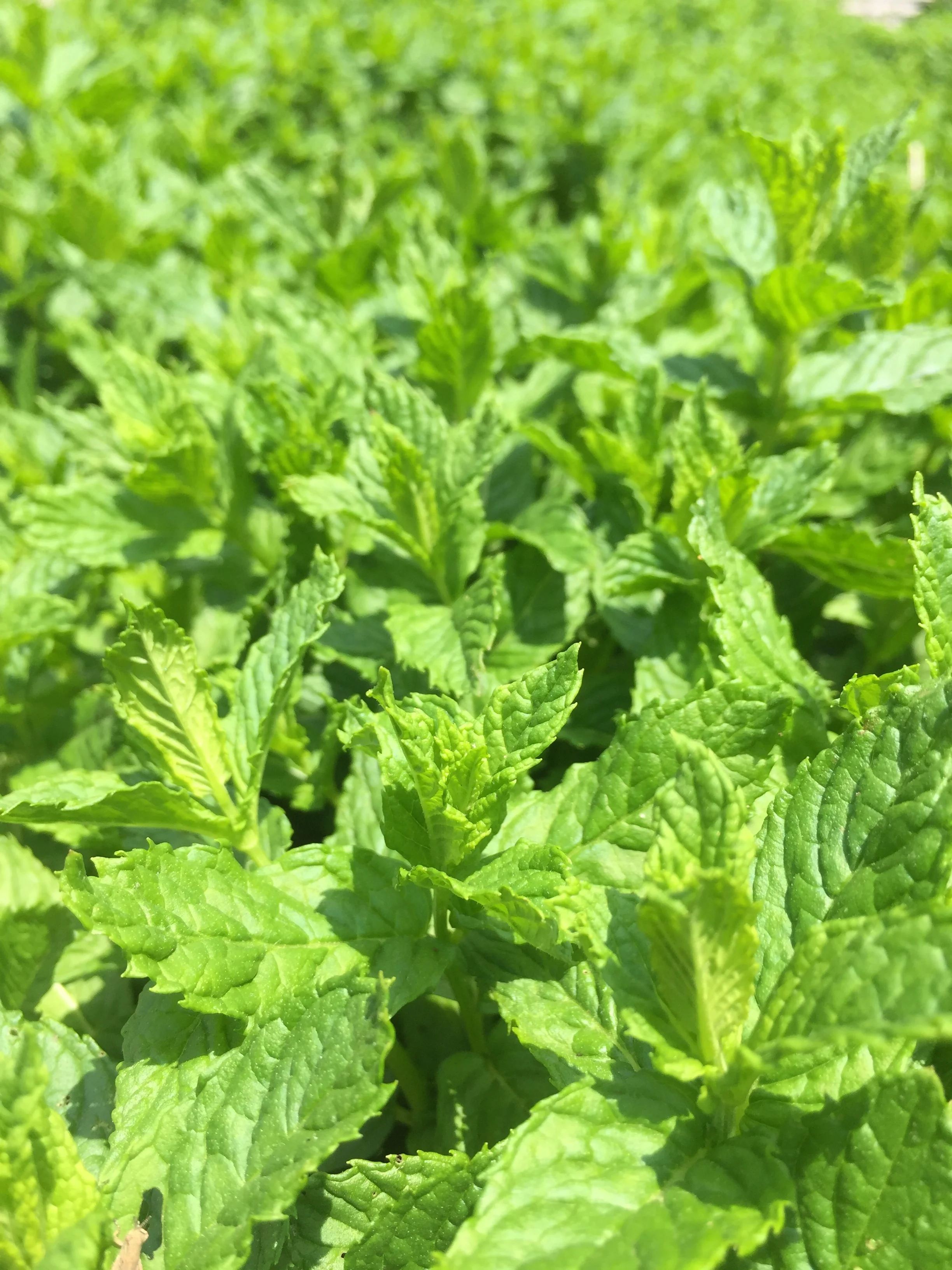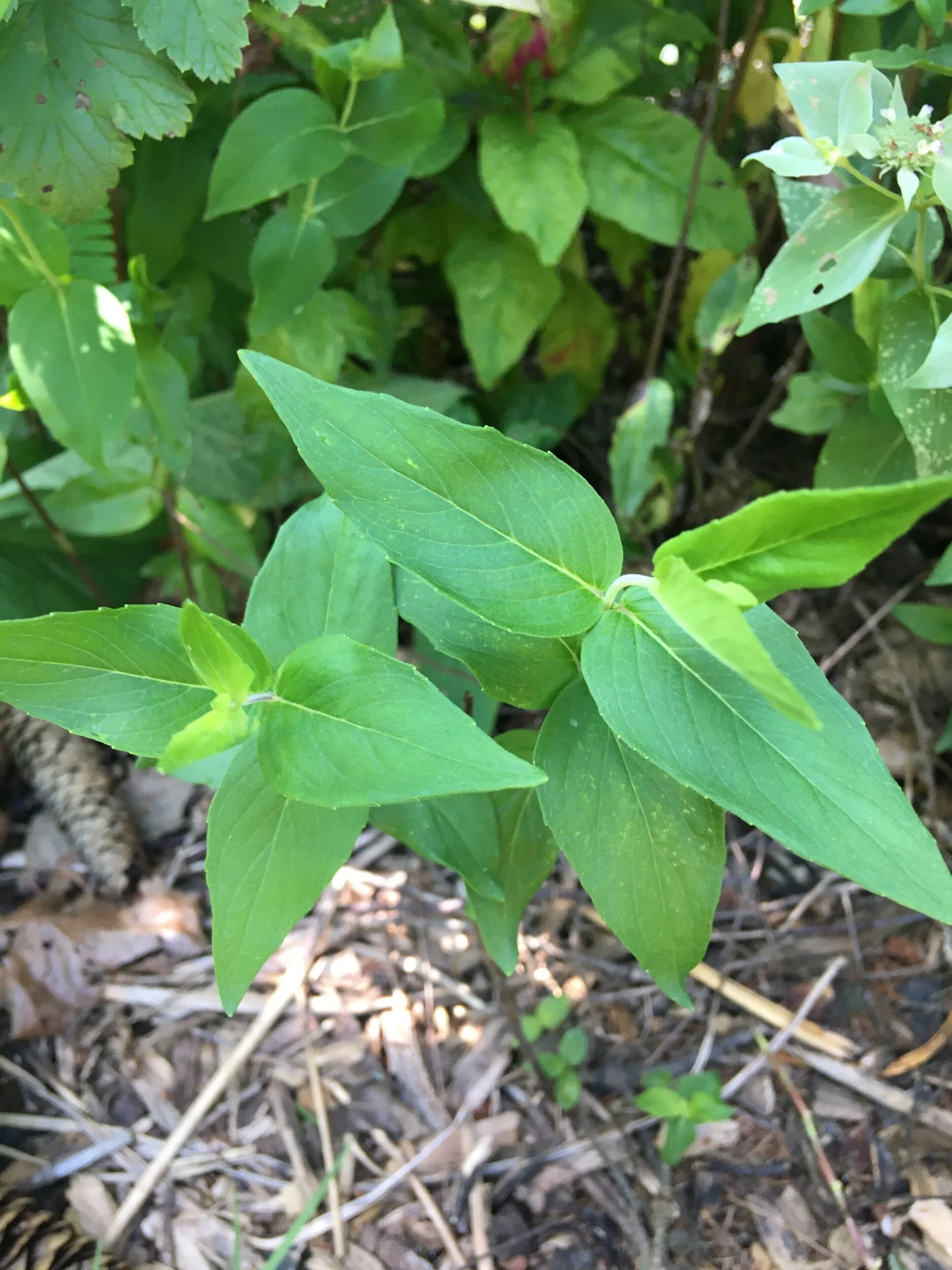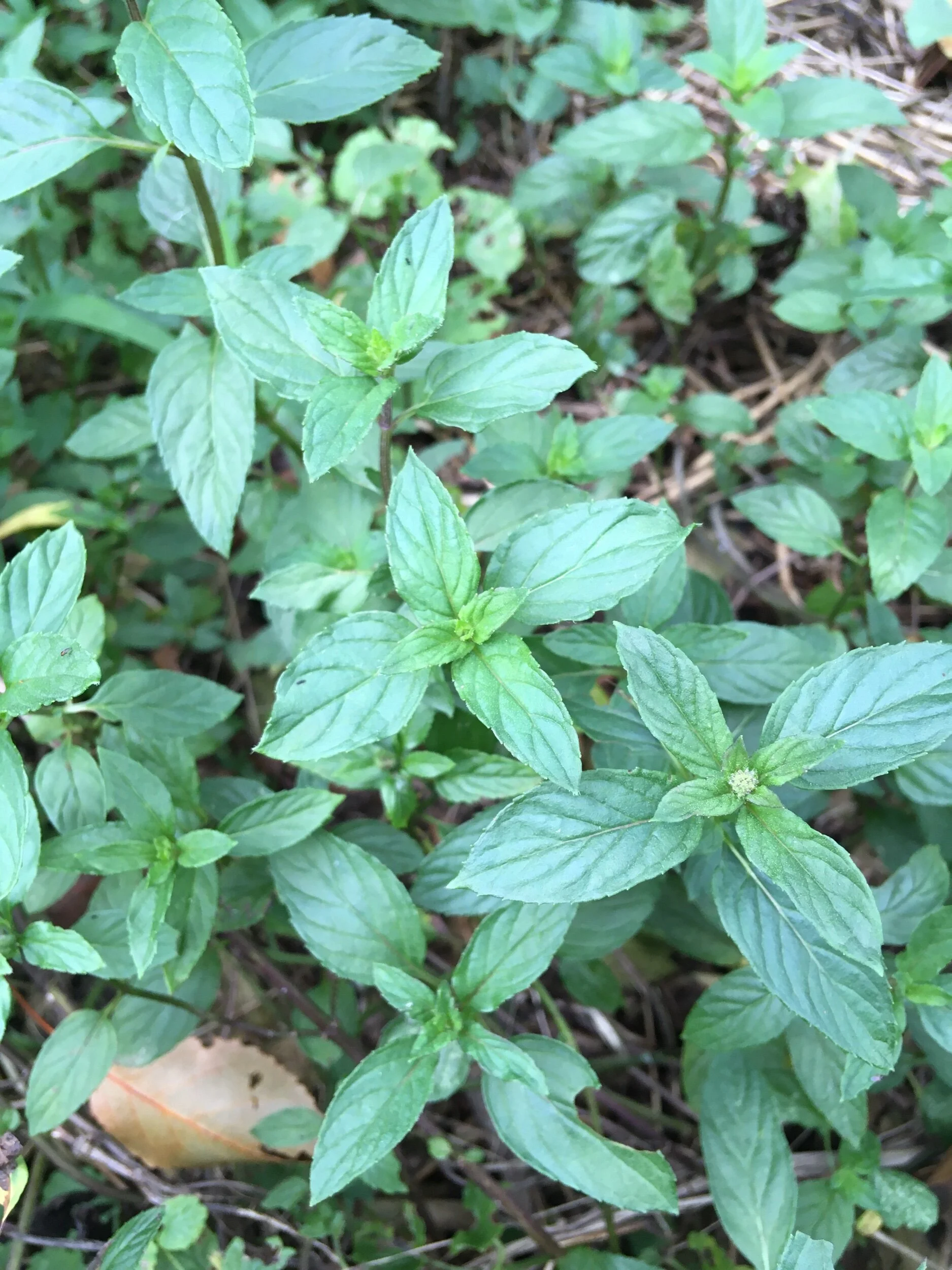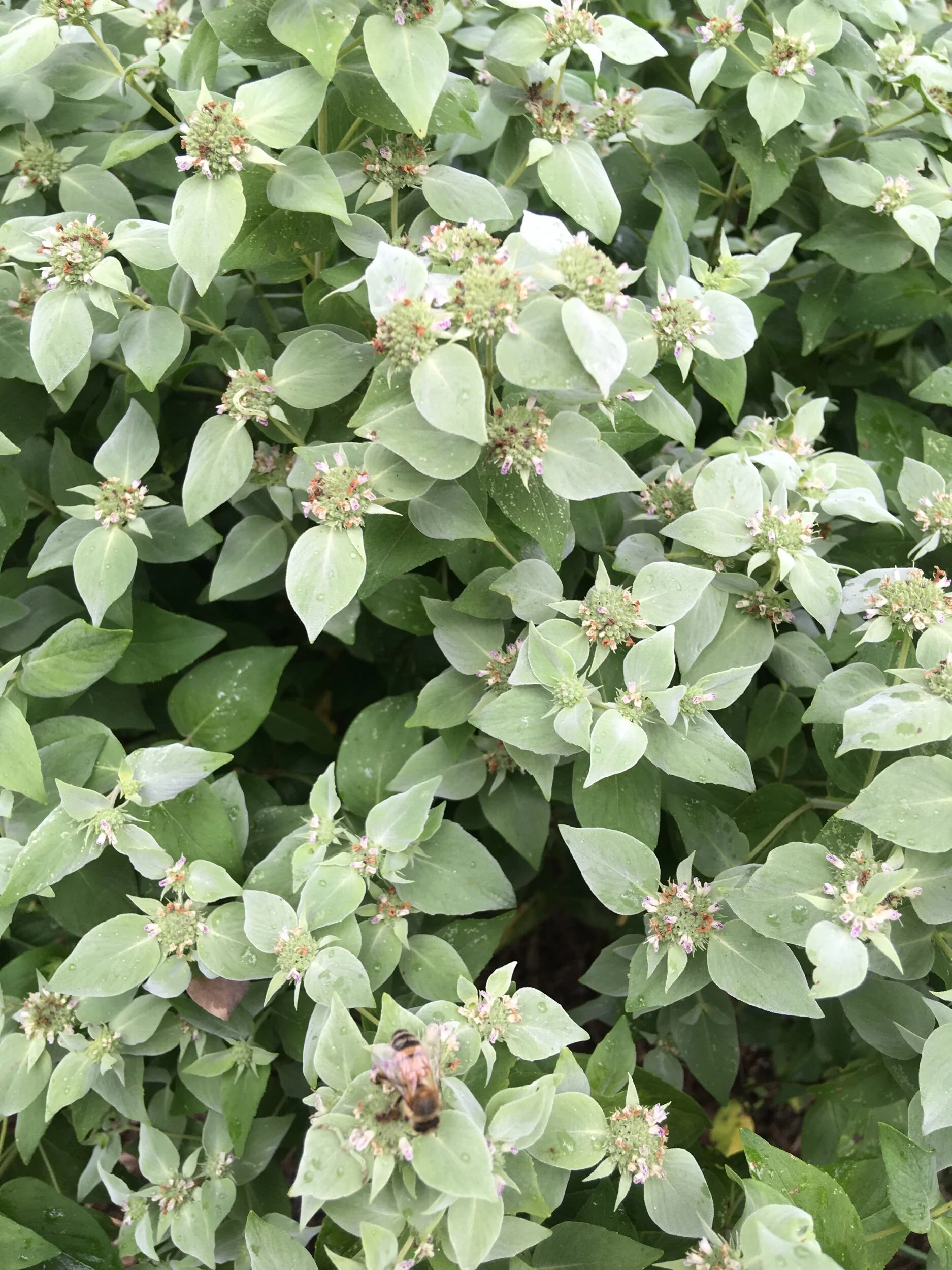Mint





Mint
Mentha spp.
Pycnanthemum spp.
Plant for hospitable teas and pollination, for goodness, for cool streamsides and hot desires, and for family reunions!
Each order is a bundle of multiple rootlets
Hardy from Zones 3-10. Up to 3 feet tall and spreads!
Mint is the ancient herb of hospitality. Its welcoming aroma perfumes every continent except Antarctica, and even they might have some in a greenhouse. Mint’s first known use was for aromatically cleaning rooms. Families scattered leaves on dirt floors so walking wafted the scent throughout the home. Similarly, Mint is well-known as a breath freshener and toothpaste flavor, as well as medicine for stomach and chest pains. It’s also a good companion plant along garden edges to invite beneficial pollinators and ward off undesired insects. Whether in house or body, Mint offers cleanliness and ease.
Most Mints are perennial herbs that spread as over and underground stolons, a running stem that roots itself as it grows. Just one plant will spread into an excellent tea patch, but take care where you plant it for the same reason! It loves water: streams, rivers, ponds, moist woodlands. We plant Mint in rainwater gardens and near overflows from cisterns and tanks. We like cutting leaves to dry for warm winter tea, but we also drink copious amounts of cool fresh tea with a little honey during the summer growing season. Mint is the vital ingredient for Touareg, or Moroccan, tea, common throughout the Maghreb region of North Africa and some Arabic-speaking countries. Hosts ceremonially offer guests up to three cups of green tea with Mint leaves and sugar as a sign of hospitality. Middle Eastern recipes often use Mint as a spice for lamb, or you can flavor jellies and ice creams!
The Latin mentha comes from the Greek nymph Minthe, once the lover of the underworldly god Pluto. When Pluto’s wife found out, she murdered Minthe, but Pluto revived her as the sweet-smelling herb. Mint’s known as Menta in many Spanish-speaking countries. The larger Mint family, Lamiaceae, also includes Basil, Rosemary, Sage, and Oregano. That family reunion would smell pretty good!
We grow three types of Mint:
Peppermint (Mentha x piperita) is a cross between Watermint (aquatica) and Spearmint (spicata). Grows throughout North America, but originally from the Mediterranean. Pliny the Elder recorded that Peppermint decorated feast tables and bodies of the Greeks and Romans, who might’ve been eager to get the party started. After all, Aristotle wrote that Peppermint was an aphrodisiac! Alexander the Great apparently thought the same, because he outlawed Peppermint among his soldiers so steamy dreams wouldn’t take energy away from fighting. Ancient Egyptians might have grown Peppermint and 13th century medical documents in Iceland contain references to its use to relieve pain and gas. Other uses include raising body heat to bring on sweating, treating colds and coughs, and modern research is investigating Peppermint’s use for irritable bowel syndrome and dyspepsia.
Apple (Mentha suaveolens) also goes by Woolly Mint, a reference to the rounded light-green fuzzy leaves. Also hailing from the Mediterranean and commonly cultivated as a delicious ground cover. Grows easily from its stolons in sun and shade. The leaves are an excellent flavor for jelly, salads, teas, and couscous, a Maghrebi dish of stew poured over steamed wheat balls. In Spanish-speaking countries, it’s known as “the good herb,” hierbabuena. We won’t argue with that.
Mountain Mint (Pycnanthemum muticum) isn’t a Mentha but it’s in the Lamiaceae family! These mints have a complex genetic inheritance, but closely related to Monarda species like Bee Balm. All 20 species are native to North America, with all but one ranging from Texas across and up the East Coast in bogs, meadows, ridges, and low-lying woodlands. Appalachia holds the highest diversity, hosting 13 species including this one, known as Short-Toothed or Clustered Mountain Mint, which fits the scientific name: genus name is Greek for “dense flower,” and the species name means “blunt” in Latin. Doesn’t spread as intensely as other Mints, but still finds room to stretch out, faring fine in shade but thriving in full sun. Smells spearminty and makes a mild pleasant tea. From July to September, mall pinkish tubular flowers are circled by frost-silver bracts; tops many lists as a remarkable pollinator, almost constantly buzzing with native bees, butterflies, and beneficial wasps, so we’re planting them under fruit trees. Hardy from Zones 4-8.
We grow our Mints from divisions in our patches.